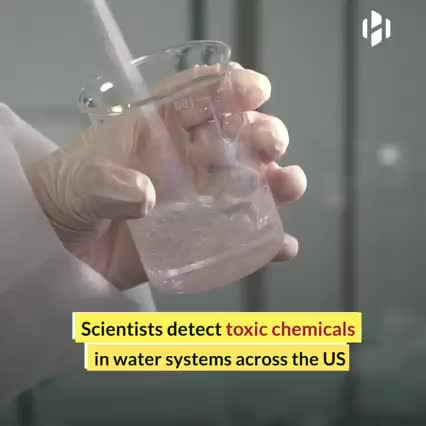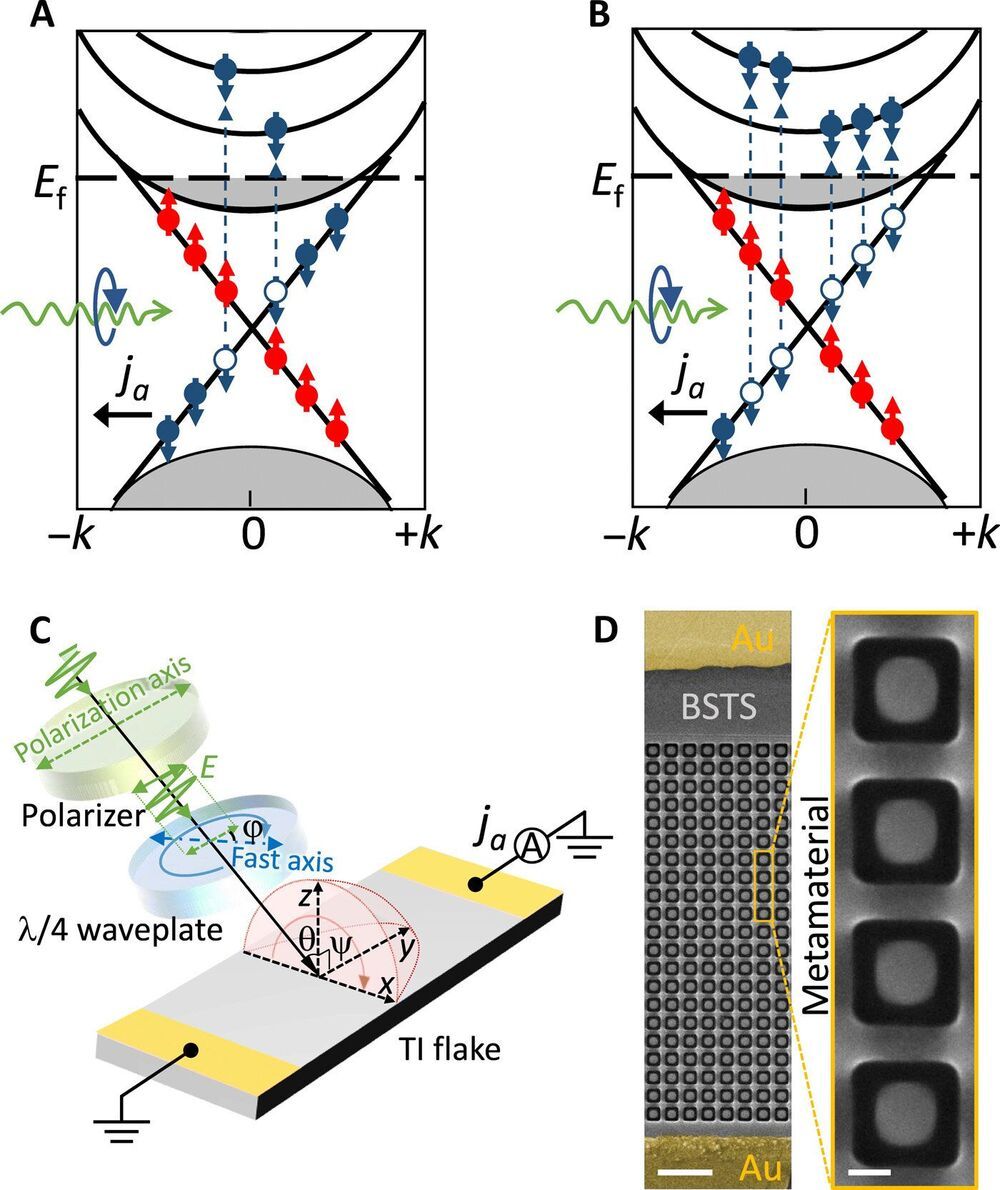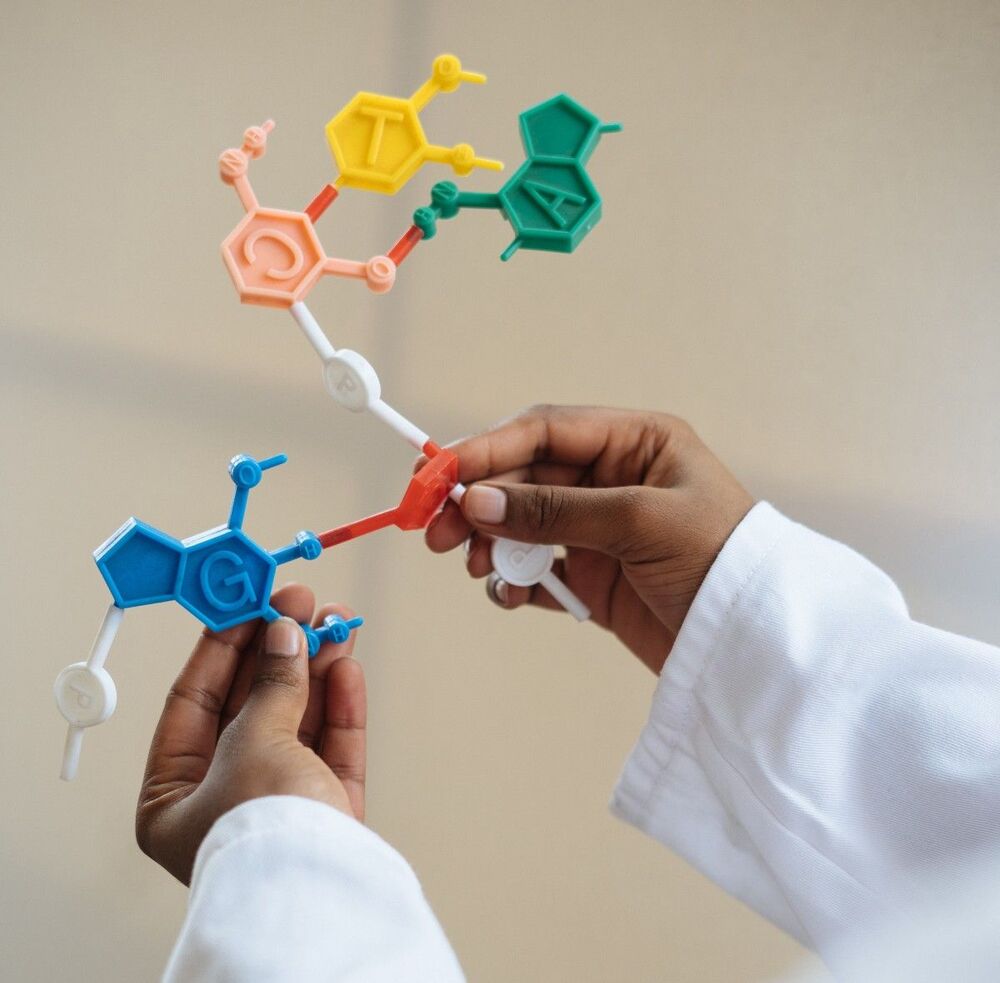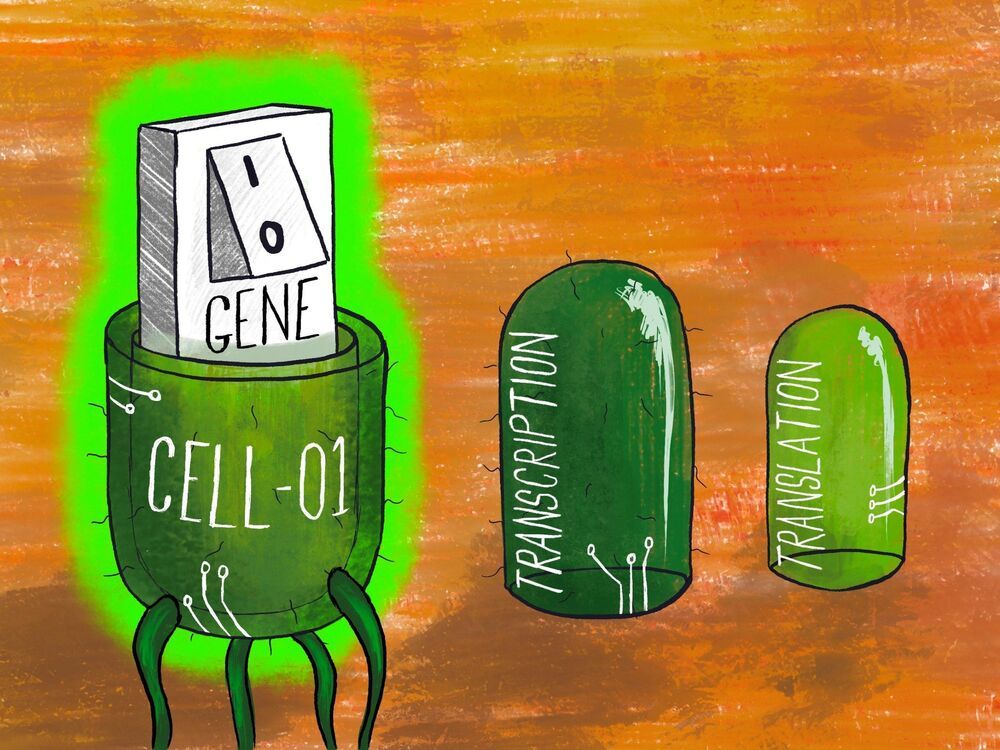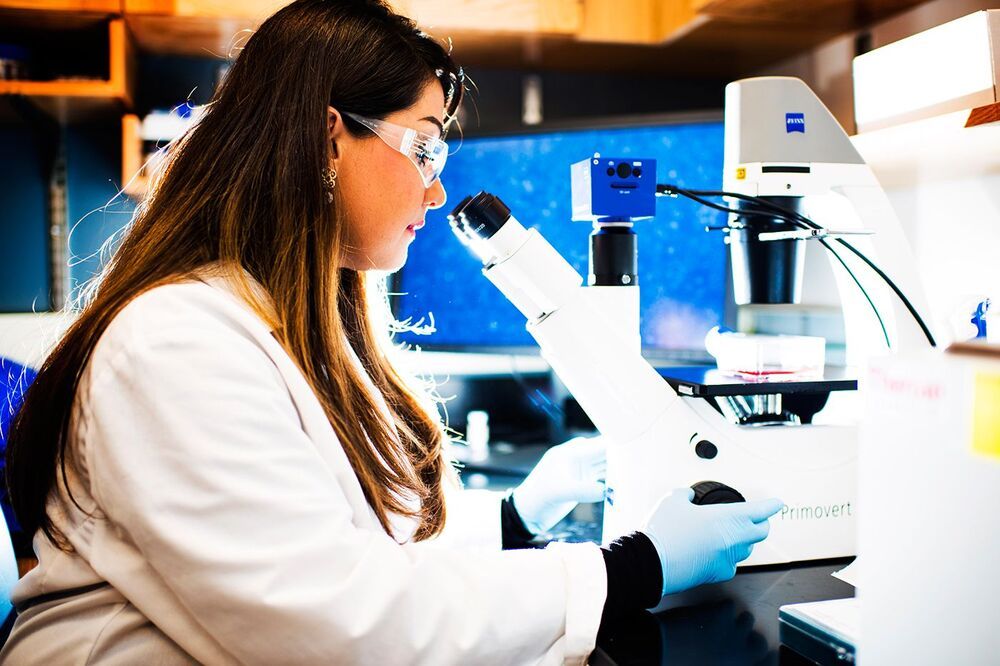Archive for the ‘chemistry’ category: Page 257
Apr 16, 2021
Self-powered locomotion of a hydrogel water strider
Posted by Saúl Morales Rodriguéz in categories: chemistry, robotics/AI
Hydrogels are an exciting class of materials for new and emerging robotics. For example, actuators based on hydrogels have impressive deformability and responsiveness. Studies into hydrogels with autonomous locomotive abilities, however, are limited. Existing hydrogels achieve locomotion through the application of cyclical stimuli or chemical modifications. Here, we report the fabrication of active hydrogels with an intrinsic ability to move on the surface of water without operated stimuli for up to 3.5 hours. The active hydrogels were composed of hydrophobic and hydrophilic groups and underwent a dynamic wetting process to achieve spatial and temporal control of surface tension asymmetry. Using surface tension, the homogeneous active hydrogels propelled themselves and showed controlled locomotion on water, similar to common water striders.
Apr 13, 2021
Topological insulator metamaterial with giant circular photogalvanic effect
Posted by Saúl Morales Rodriguéz in categories: biological, chemistry, food, nanotechnology, physics, space
Topological insulators have notable manifestations of electronic properties. The helicity-dependent photocurrents in such devices are underpinned by spin momentum-locking of surface Dirac electrons that are weak and easily overshadowed by bulk contributions. In a new report now published on Science Advances, X. Sun and a research team in photonic technologies, physics and photonic metamaterials in Singapore and the U.K. showed how the chiral response of materials could be enhanced via nanostructuring. The tight confinement of electromagnetic fields in the resonant nanostructures enhanced the photoexcitation of spin-polarized surface states of a topological insulator to allow an 11-fold increase of the circular photogalvanic effect and a previously unobserved photocurrent dichroism at room temperature. Using this method, Sun et al. controlled the spin transport in topological materials via structural design, a hitherto unrecognized ability of metamaterials. The work bridges the gap between nanophotonics and spin electronics to provide opportunities to develop polarization-sensitive photodetectors.
Chirality
Chirality is a ubiquitous and fascinating natural phenomenon in nature, describing the difference of an object from its mirror image. The process manifests in a variety of scales and forms from galaxies to nanotubes and from organic molecules to inorganic compounds. Chirality can be detected at the atomic and molecular level in fundamental sciences, including chemistry, biology and crystallography, as well as in practice, such as in the food and pharmaceutical industry. To detect chirality, scientists can use interactions with electromagnetic fields, although the process can be hindered by a large mismatch between the wavelength of light and the size of most molecules at nanoscale dimensions. Designer metamaterials with structural features comparable to the wavelength of light can provide an independent approach to devise optical properties on demand to enhance the light-matter interaction to create and enhance the optical chirality of metamaterials. In this work, Sun et al.
Apr 13, 2021
BPA-like chemicals likely causing “alarming” damage to brain cells
Posted by Jason Blain in categories: biotech/medical, chemistry, food, health, neuroscience
Controversy has shrouded the once-common plasticizer BPA since studies started to highlight its links to a whole range of adverse health effects in humans, but recent research has also shown that its substitutes mightn’t be all that safe either. A new study has investigated how these compounds impact nerve cells in the adult brain, with the authors finding that they likely permanently disrupt signal transmission, and also interfere with neural circuits involved in perception.
BPA, or bisphenol A, is a chemical that has been commonly used in food, beverage and other types of packaging for decades, but experts have grown increasingly concerned that it can leech into these consumables and impact human health in ways ranging from endocrine dysfunction to cancer. This came on the back of scientific studies revealing such links dating back to the 1990s, which in turn saw the rise of “BPA-free” plastics as a safer alternative.
One of those alternatives is bisphenol S (BPS), and while it allows plastic manufacturers to slap a BPA-free label on their packaging, more and more research is demonstrating that it mightn’t be much better for us. As just one example, a study last year showed through experiments on mice that just like BPA, BPS can alter the expression of genes in the placenta and likely fundamentally disrupt fetal brain development.
Apr 12, 2021
FLIR Wins DARPA Contract Worth Up to $20.5M to Develop Revolutionary New Protective Fabrics for Chem-Bio Defense
Posted by Saúl Morales Rodriguéz in categories: biotech/medical, chemistry, military

FLIR Systems, Inc. (NASDAQ: FLIR) announced it has won a contract with the Defense Advanced Research Projects Agency (DARPA) to rapidly develop novel fabrics with embedded catalysts and chemistries that can fight and reduce chemical and biological threats upon contact.
The revolutionary fabrics will be incorporated into protective suits and other equipment such as boots, gloves, and eye protection that can be worn by troops on the battlefield, medical experts, healthcare workers, and more. FLIR received $11.2 million in initial funding for the potential five-year effort worth up to $20.5 million, including options.
Apr 9, 2021
IBM Bringing Quantum on-Prem for Cleveland Clinic
Posted by Saúl Morales Rodriguéz in categories: chemistry, health, quantum physics, robotics/AI
Fueled by the need for faster life sciences and healthcare research, especially in the wake of the deadly COVID-19 pandemic, IBM and the 100-year-old Cleveland Clinic are partnering to bolster the Clinic’s research capabilities by integrating a wide range of IBM’s advanced technologies in quantum computing, AI and the cloud.
Access to IBM’s quantum systems has so far been primarily cloud-based, but IBM is providing the Cleveland Clinic with IBM’s first private-sector, on-premises quantum computer in the U.S. Scheduled for delivery next year, the initial IBM Quantum System One will harness between 50 to 100 qubits, according to IBM, but the goal is to stand up a more powerful, more advanced, next-generation 1000+ qubit quantum system at the Clinic as the project matures.
For the Cleveland Clinic, the 10-year partnership with IBM will add huge research capabilities and power as part of an all-new Discovery Center being created at the Clinic’s campus in Cleveland, Ohio. The Accelerator will serve as the technology foundation for the Clinic’s new Global Center for Pathogen Research & Human Health, which is being developed to drive research in areas including genomics, single-cell transcriptomics, population health, clinical applications and chemical and drug discovery, according to the Clinic.
Apr 8, 2021
Men to Be Sterile by 2045 — Escape Chemicals to Thrive
Posted by Greg Allison in categories: biotech/medical, chemistry, food
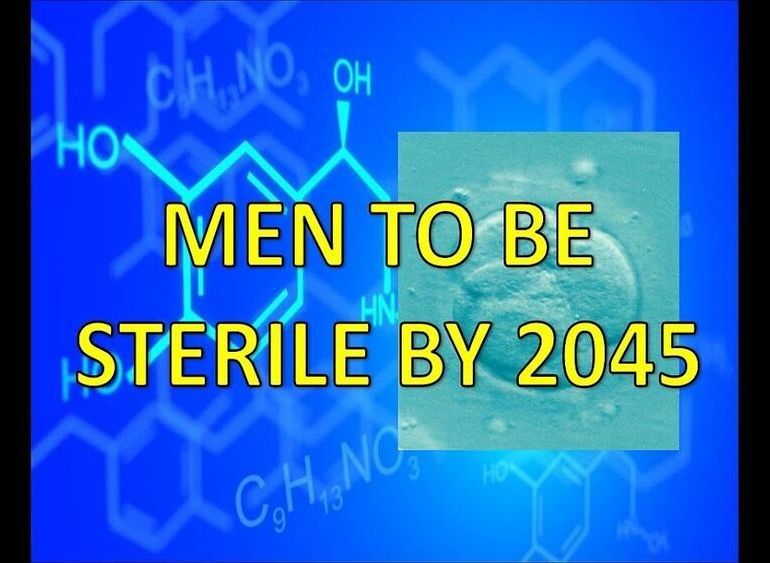
Find out how endocrine disrupting chemicals, like BPA, can render most men sterile by 2045. Learn about chemicals in our food that disrupt our immune system, about cancer causing chemical in hand sanitizers. See what these have to do with sperm counts falling. How do they affect wildlife, and food production. See what you can do about it!
Green Gregs has teamed up with True Leaf Market to bring you a great selection of seed for your spring planting. Check it out: http://www.pntrac.com/t/TUJGRklGSkJGTU1IS0hCRkpIRk1K
Continue reading “Men to Be Sterile by 2045 — Escape Chemicals to Thrive” »
Apr 7, 2021
Simulating Chemical Reactions with Quantum Computing
Posted by Quinn Sena in categories: chemistry, computing, quantum physics
101 quantum chemistry, how to start.
A wave function is a function defining the quantum state of an isolated system. It is generally represented by ψ(), pronounced [psi].
Apr 7, 2021
Bioengineers Learn the Secrets to Precisely Turning on and off Genes in Living Cells
Posted by Jason Blain in categories: bioengineering, biotech/medical, chemistry
In a recent study led by the University of Bristol, scientists have shown how to simultaneously harness multiple forms of regulation in living cells to strictly control gene expression and open new avenues for improved biotechnologies.
Engineered microbes are increasingly being used to enable the sustainable and clean production of chemicals, medicines and much more. To make this possible, bioengineers must control when specific sets of genes are turned on and off to allow for careful regulation of the biochemical processes involved.
Their findings are reported in the journal Nature Communications.
Apr 6, 2021
Researchers develop surgical glue that seals wounds in seconds
Posted by Quinn Sena in categories: biotech/medical, chemistry, engineering
Circa 2017
When surgeons complete a successful lung operation, everyone should breathe a sigh of relief. But real relief may not come until weeks or even months later, when doctors remove the patient’s lingering sutures or staples. And that’s assuming there were no leakages, which can send a patient right back to the hospital.
Nasim Annabi, assistant professor of chemical engineering, has a better solution: a new type of surgical glue that could replace the need for staples and sutures altogether. Annabi is leading the research, which she and her colleagues from the University of Sydney and Harvard Medical School described in a paper published Wednesday in Science Translational Medicine.
Continue reading “Researchers develop surgical glue that seals wounds in seconds” »
